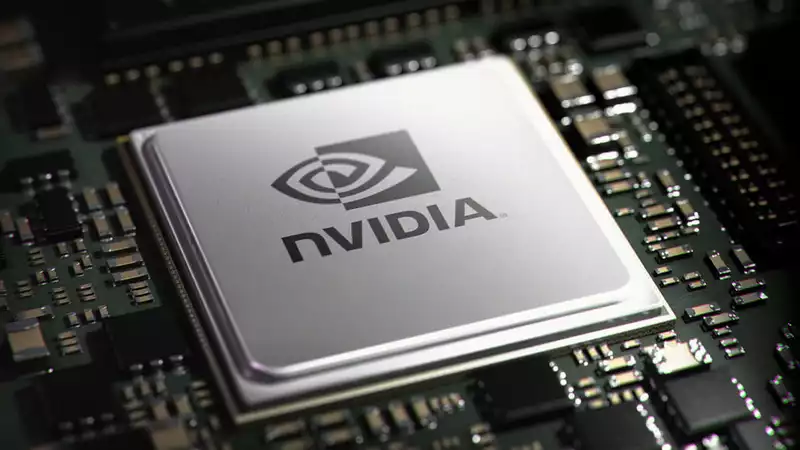Lovelace is the codename Nvidia is supposedly using for its next-generation GeForce graphics cards, which could ship as early as late 2022 if the leak proves true. We also heard rumors that a Nintendo Switch Pro with a Lovelace GPU may be in the works.
Of course, all of that is quite far-fetched, which means that everything we hear about Lovelace should be taken with skepticism. The ongoing chip shortage and the vagaries of Nvidia's product roadmap could easily cause significant delays or changes.
Still, what we have heard so far paints an exciting picture of where Nvidia's GPU business is headed, given the impressive performance and popularity of current Nvidia cards like the GeForce RTX 3070 and GeForce RTX 3080, the prospect of a new Lovelace-powered card (perhaps branded as the RTX 4000 series) in 2022 or 2023 should excite PC gaming enthusiasts.
When they arrive, expect them to be a bit more readily available than current Nvidia cards.
As of July 2021, the latest and most reliable leaks (from regular leakers @greymon55 and @kopite7kimi) regarding Nvidia's Lovelace GPU are that it will be manufactured by TSMC on 5-nanometer nodes, or possibly N 5P (N5 Performance), and claims that it will be manufactured in a higher performance version named N5 Performance. Either way, the 5nm process should produce a more efficient card than the 8nm node process used for the GeForce 3070, 3080, and 3090 cards.
If you're interested in raw numbers, the latest leaks indicate that the GeForce 4000 series flagship cards with Lovelace will have 144 streaming multiprocessors (82 for the GeForce RTX 3090) and up to 18,432 CUDA cores The company says it will have up to 18,432 CUDA cores.
If you are not familiar with CUDA cores, they are essentially parallel data processing units within an Nvidia GPU that work much like a CPU within a PC. In general, the more CUDA cores a GPU has, the faster it can process complex data. Thus, it is critical that an Nvidia GPU built on Lovelace can have over 18,000 CUDA cores, which is almost double the 10,496 cores on the ferocious RTX 3090. Of course, the two CUDA core counts are not directly comparable because the RTX 3090 is built on the Ampere architecture.
Leaker Greymon55 also reiterated the idea that Nvidia GPUs built on Lovelace require significantly more power than the GeForce 3000 series GPUs they are replacing, in some cases twice as much. This is because the GeForce RTX 3090 already consumes 300-400 watts of power, so putting it in a powerful system would require at least 850W, or even more if you are using really power-hungry components like the AMD Ryzen Threadripper CPU. Because you'll need a power supply unit that delivers more than that, if the GeForce 4000 series cards really do require twice the power, we may be looking at a future where 1,000 to 1,800W power supplies will be needed to build a truly high-performance PC.
As mentioned earlier, the current instability in the GPU market is a good reason to tolerate all the rumored release windows for Nvidia's next generation cards.
Nevertheless, @greymon55 has so far claimed that the Lovelace card will appear "no earlier than the end of 2022." We have also heard credible reports that TSMC and Nvidia's rival AMD have already validated their 5nm processes for producing desktop chip products.
Also, since Nvidia often takes two years between releasing major GPU lines, the fact that the high-end GeForce 3000 series cards debut in late 2020 (a revamped line of 3000 series Ti cards will be available in 2021) means that a late 2022 launch for the GeForce 4000 series fits squarely into Nvidia's playbook.
We have yet to hear any credible leaks or rumors about how Nvidia will price its next generation GPUs, but we can make some assumptions based on how the company has priced its previous generation GPUs.
Typically, Nvidia will pre-launch its new GeForce product line with a few high-end cards, priced in the $500 to $1,500 range. For example, in September 2020, the company announced that the high-end GeForce RTX 3090 would be priced at $1,500; the RTX 3080 initially sold for $699 and the mid-range RTX 3070 for $499. [These prices were nearly identical to the pricing of the previous generation (RTX 2070-2090), so it is certain that Nvidia is attempting to achieve similar pricing for its GeForce RTX 4000 series cards.
However, it is not really known how the current chip shortage and fluctuations in the GPU market will affect the final pricing of the new series of GeForce cards. All GeForce 3000 series cards are currently selling (often used) at much higher prices than originally offered, and there is no reason to expect the situation to return to normal by the end of 2022. Furthermore, Nvidia may always choose to justify price increases by pointing to the power and efficiency gains that Lovelace is rumored to offer.
It is a safe bet that Nvidia is working on a successor to its ultra-popular GeForce 3000 series cards despite the GPU market being severely volatile, and so far, all indications are that those cards will feature Lovelace.
If the leaked information about how high-performance these cards are proves to be true, Lovelace could help Nvidia go toe-to-toe with rival AMD, AMD's next-generation 5nm GPU series using its own RDNA 3 architecture using its own RDNA 3 architecture, which is also rumored to debut in late 2022.
And of course, we can't completely dismiss the leaked information that the previously rumored Nintendo Switch Pro will feature a scaled-down Lovelace chip. Indeed, after launching the Switch OLED, Nintendo has officially stated that it has "no plans to launch any other [Switch] models at this time," but that plan may change by the end of 2022.
.









Comments